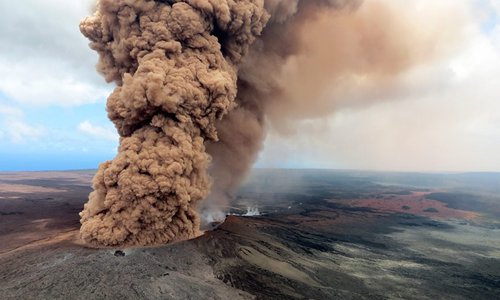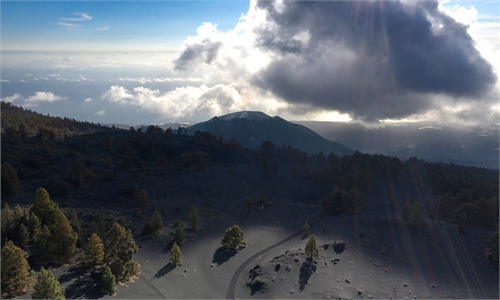
Reddish-brown ash plume and lava occurred after a magnitude 6.9 South Flank following the eruption of Hawaii's Kilauea volcano on May 4. The governor of Hawaii has declared a local state of emergency. (VCG/US Geological Survey)
The world's largest volcano, which has offered a spectacular weeks-long show in its first eruption for almost four decades, has gone quiet, scientists in Hawaii said Tuesday.
At the height of the flare-up, Mauna Loa spewed fountains of lava 200 feet (60 meters) into the sky, and sent rivers of molten rock gushing down its sides, wowing vulcanologists and helicopter-riding tourists.
Huge fissures on the volcano, which makes up the bulk of Hawaii's Big Island, vented tons of gas, and sprayed slivers of volcanic glass - known as Pele's Hair.
But on Tuesday, experts at the US Geological Survey said the show was largely over.
"Mauna Loa is no longer erupting," an update said.
"Lava supply to the fissure 3 vent on the Northeast Rift Zone ceased on December 10 and sulfur dioxide emissions have decreased to near pre-eruption background levels.
"Volcanic tremor and earthquakes associated with the eruption are greatly diminished."
But such is the volume - and intense heat - of the viscous rock that issued from the Earth's belly, that hot spots could remain visible for several weeks.
"Spots of incandescence may remain near the vent, along channels, and at the flow front for days or weeks as the lava flows cool," the scientists said.
"However, eruptive activity is not expected to return based on past eruptive behavior."
The biggest volcano on Earth by volume, Mauna Loa, whose name means "Long Mountain," is larger than the rest of the Hawaiian islands combined.

